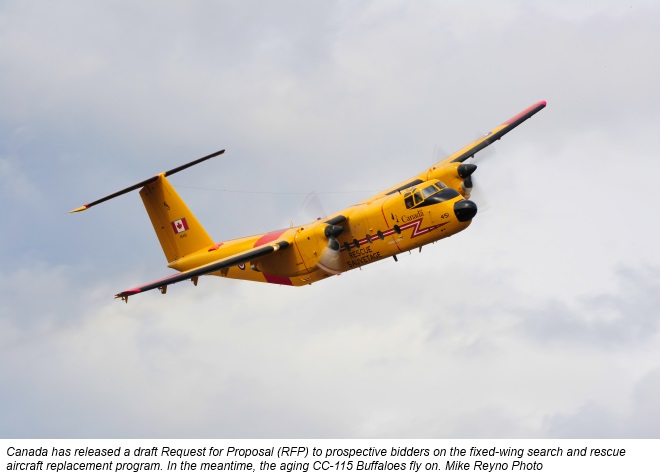Estimated reading time 2 minutes, 25 seconds.

Canada’s $3-billion plan to acquire new fixed-wing search and rescue (FWSAR) airplanes is inching closer to fruition, with the release of a draft Request for Proposal (RFP) to prospective bidders. But there are continuing issues.
In a new note to the industry, Public Works & Government Services Canada (PWGSC) cautions that while it wants feedback by Oct. 18, the draft RFP – which it calls a “key event” in its “engagement strategy” – is “missing components” which it will “endeavor to provide” at an unspecified later date.
“The objective of the government . . . is to ensure that the overall requirement is feasible and affordable,” PWGSC says. “For industry, reviewing the draft RFP represents an additional opportunity to provide comments that could assist the FWSAR project team in the preparation and completion of final FWSAR tendering documentation.”
Whichever aircraft or combination of platforms is selected, they would replace Canada’s fleet of 1960s-era de Havilland CC-115 Buffaloes, as well as the older Lockheed Martin CC-130 Hercules aircraft used for search and rescue missions. (Rotary-wing capability is provided by AgustaWestland CH-149 Cormorant and Bell CH-146 Griffon helicopters.)
The FWSAR project has been dogged by controversy for years, including accusations that the original Statement of Operational Requirements (SOR) had been written for a specific aircraft rather than for the mission.
Prospective replacement aircraft include the Airbus Military C-295 and the Alenia Aeronautica C-27J Spartan, both high-wing, twin-engine turboprops similar in basic concept to the Buffaloes.
Other potential contenders include new CC-130J Hercules aircraft, which would potentially offer the RCAF operational economies through parts and service commonality; “remanufactured” Buffaloes from British Columbia-based Viking Air Ltd., which contends that incorporation of new technologies into a DHC-5NG “next generation” Buffalo is viable; and the Bell-Boeing V-22 Osprey tilt-rotor.
So-called “alternate service delivery” or partial privatization of SAR is also being considered, opening up such possibilities as company-owned and -operated aircraft, perhaps with one or two RCAF crewmembers, or possibly government-owned but privately-operated aircraft.








